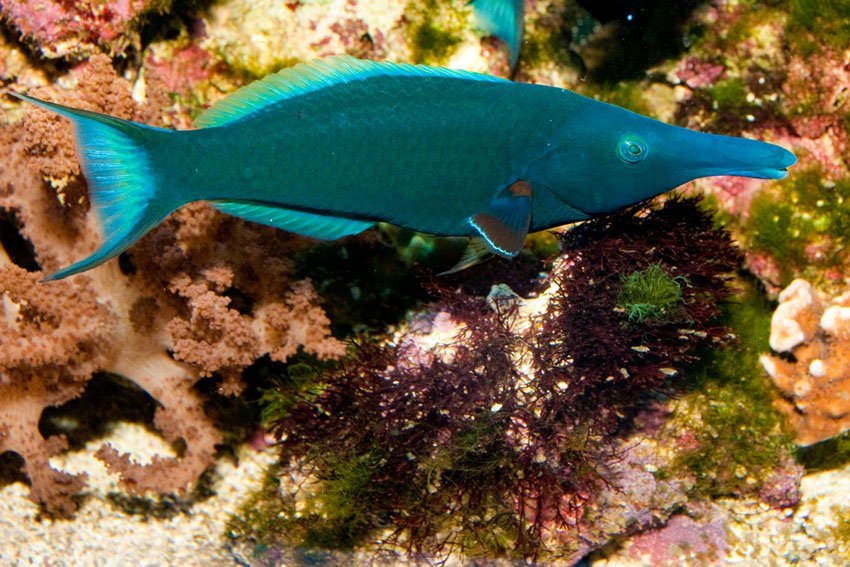Wrasses

Wrasses (Labridae) Overview
Wrasses are common coral reef fish. Most species have elongated bodies with a continuous dorsal fin. But they come in all sorts of colors and sizes. All of them are either carnivores or planktivores and have sharp teeth.
Most wrasses begin their life as a female and some of them later on change into males, who are usually larger and more colored and more active than females. The males are the leader of a group of females. Should a male die, the dominant female of that group transforms itself into a male to take his place. Their Hawaiian name is hinalea.
Frequently Asked Questions
What is unique about wrasses in Hawaii?
Many Hawaiian wrasses, such as the Hawaiian cleaner wrasse, are endemic and play a vital role in reef ecosystems by cleaning parasites off other fish.
Do wrasses really change gender?
Yes. Many wrasses begin life as females and can change into males later. If the dominant male in a group dies, a female may transition to take his place.
Why are wrasses so colorful?
Wrasses use their vibrant colors to signal mating status, establish territory, and camouflage among coral reefs. Males tend to be more vividly colored.
What is a cleaner wrasse?
A cleaner wrasse is a small wrasse species that removes parasites and dead skin from other fish. This mutual relationship benefits both the wrasse and the "client" fish.
Are wrasses safe to observe while snorkeling?
Absolutely! Wrasses are harmless and fun to watch as they dart around reefs. Just remember to look, not touch, to preserve the delicate reef ecosystem.








